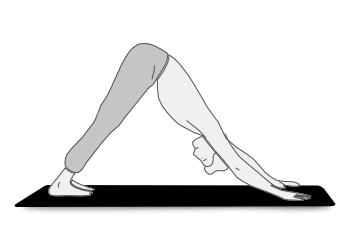A good night’s sleep is paramount to your overall health and well-being. And like mattresses, your pillow plays a major role in the quality of your sleep. A new pillow is a fairly easy investment—much cheaper than replacing your mattress—that offers a big payoff. That is, if you know which pillow is right for you.
The National Sleep Foundation recommends replacing your pillow every one to two years. How do you know when it's time for a new pillow? “Fold it in half and see if it stays that way,” they say. “If it does, it's time for a new one.” Besides, if you've been using simple, throwaway pillows from a big box store, you're missing out. There are better options. And while an old school down pillow is still one of the most popular, there are also a few fantastic alternative options you may want to try out (like cooling pillows). Herewith, the best options our team of troubled sleepers found.

Advertisement
Best Overall
Memory-foam pillows can be ideal for all types of sleepers, but most are too dense and tend to retain heat. This clever version is filled with a shredded, nontoxic memory foam that holds its loft while allowing air to circulate. Plus, you can remove or add filling at home to create your own perfect height. A bamboo-derived stay-cool fabric cover is also hypoallergenic and dust mite resistant, which is ideal for allergy sufferers or germaphobes who want the ultimate comfort.
Original Loft pillow,
$72 by Coop Home
The Down
Gold Standard
A classic goose down pillow still reigns supreme in terms of moldable comfort and a light, fluffy luxurious feel. However, some sleepers complain of insufficient support and excessive sinkage around the head and neck. Brooklinen's popular down pillow is a standout because it comes in three different constructions (plush, mid-plush and firm). Filled with ethically-sourced Canadian down, they're also a bargain at this price point.
Down pillow,
from $119 by Brooklinen
Best for Side Sleepers
Designed specifically for side and back sleepers, Parachute's medium-density down alternative pillow offers unparalleled support and retains its shape after you apply weight to it. That's all thanks to a 3.5 inch gusset designed to take the strain off your neck and shoulders while you rest. But the fluffy and 100% hypoallergenic down alternative fill keeps it from feeling too dense, which is often a problem with pillows made for side sleepers.
Down alternative side sleeper pillow,
$109 by Parachute
Advertisement
Best for
Stomach Sleepers
If you sleep on your stomach, you need a pillow with slightly less filling. These allow you to breathe comfortably and ensure your neck isn't strained. Saatva's clever pillow-in-pillow design helps promote spinal alignment for stomach sleepers, with a unique three-layer construction, that includes a cotton cover, an outer layer, and a bouncy shredded latex core. You can remove the core for a lower loft but the gusseted shape resists flattening.
Latex pillow,
from $165 by Saatva
Best for
Neck Pain
When you're looking for a problem-solving pillow to tackle genuine neck and shoulder pain, you can't go wrong with Tempur-Pedic. This pillow has been around for a while and stood the test of time because it works. The ergonomic shape elevates and supports the neck while cradling the head. It's available in three shapes so you can get the perfect contour for your neck, but know that it fits somewhat loosely in standard pillowcases and that it's sometimes deemed too firm by some.
Tempur-Neck pillow,
from $119 by Tempur-Pedic
For Adjustable
Support
We first experienced buckwheat pillows in a Japanese hotel, and while they're firmer than you might be used to, they have serious benefits. For instance, if you're a multi-position sleeper, the shape-shifting qualities of of these buckwheat hull-filled pillows, like this one from Hullo, allows for the pillow to easily conform to your shape and hold their position around your head. Plus they stay nice and cool. But like all buckwheat pillows, it makes a subtle rustling noise (like a beanbag) when you shift.
Buckwheat pillow,
$109 by Hullo
Extend the Life
of Your Pillow
If you want your pillow to last longer (and why wouldn’t you?), experts suggest getting a washable, zippered cover that goes under your regular pillowcase. This will protect the pillow from dirt, dust and other gunk that can attract dust mites and cause allergies and acne.
Keep
Them Clean
Board-certified allergist-immunologist Ryan Steele, D.O. recommends washing your pillowcases (and sheets) once a week using the hottest setting you can to kill any and all microbes and allergens. This also washes away any skin cells, sweat, oil and drool that’s accumulated over the week.
Advertisement







































